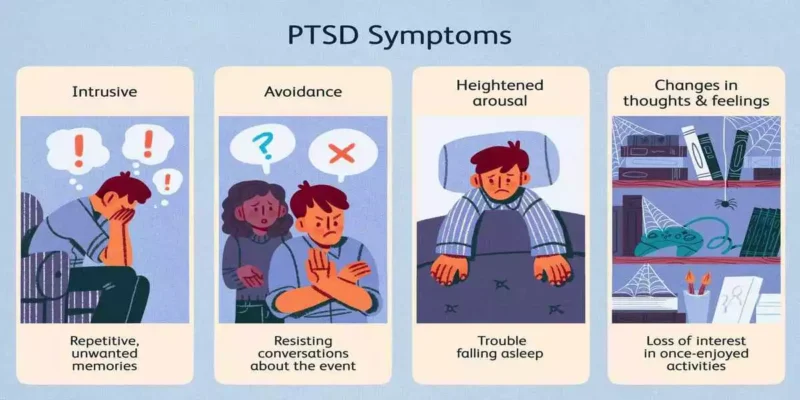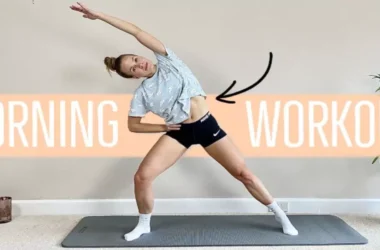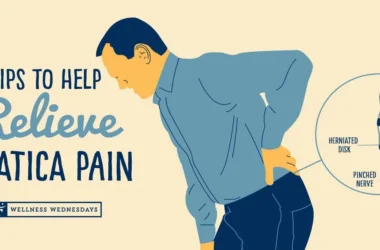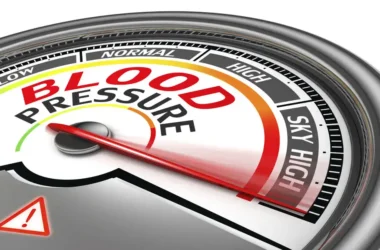[ez-toc]
Introduction
Post-Traumatic Stress Disorder (PTSD) is a mental health condition that can result from experiencing or witnessing a traumatic event.
The symptoms of PTSD can be debilitating and impact every aspect of a person’s life. While therapy and medication are essential components of PTSD recovery, exercise can also play a vital role in healing the mind and body.
In this comprehensive guide, we will explore the benefits of exercise for individuals recovering from PTSD and how physical activity can contribute to overall well-being.
The Healing Power of Exercise for PTSD
Exercise has a profound impact on mental health and can be a valuable tool in the recovery process for individuals with PTSD:
- Stress Reduction: Physical activity releases endorphins, the body’s natural mood boosters, which help reduce stress and anxiety.
- Regulating Stress Hormones: Exercise can lower cortisol levels, the stress hormone, which may be elevated in individuals with PTSD.
- Improving Sleep: PTSD often disrupts sleep patterns. Regular exercise can help improve sleep quality and reduce insomnia.
- Enhancing Self-Esteem: Engaging in physical activity and achieving fitness goals can boost self-esteem and self-confidence.
- Distraction and Coping: Exercise can serve as a healthy distraction from distressing thoughts and emotions, providing a positive coping mechanism.
Safe and Effective Exercises for PTSD Recovery
The key to incorporating exercise into PTSD recovery is to find activities that are enjoyable and manageable. Here are some safe and effective exercises to consider:
1. Cardiovascular Exercises
Cardiovascular exercises, also known as aerobic exercises, are effective in reducing stress and improving mood:
- Brisk Walking or Jogging: Walking or jogging in nature can provide additional benefits by connecting with the environment.
- Cycling: Whether outdoors or using a stationary bike, cycling is an excellent cardiovascular workout.
2. Yoga
Yoga combines physical postures, breathwork, and meditation, promoting relaxation and mindfulness:
- Hatha Yoga: Hatha yoga focuses on gentle postures and breathing techniques, making it suitable for beginners and those with physical limitations.
- Vinyasa Yoga: Vinyasa yoga involves flowing sequences that synchronize breath with movement, promoting a meditative state.
3. Swimming
Swimming is a low-impact exercise that can be both relaxing and invigorating, providing a full-body workout.
4. Martial Arts
Martial arts can empower individuals and promote self-discipline while also providing physical activity:
- Tai Chi: Tai Chi is a gentle martial art that involves slow, flowing movements, making it accessible for individuals with varying abilities.
- Karate or Kickboxing: For those looking for a more vigorous workout, karate or kickboxing classes can be an option.
Precautions and Consultation
Individuals recovering from PTSD should consider the following before starting an exercise program:
- Consult a Healthcare Provider: Seek guidance from a mental health professional or therapist to determine which exercises are safe and appropriate for the individual’s current condition.
- Start Slowly: Begin with low-intensity exercises and gradually increase the duration and intensity as fitness levels improve.
- Mindful Awareness: Be mindful of emotional triggers during exercise. If certain activities evoke distressing emotions, try alternative exercises.
- Stay Connected and Supported: Consider exercising in a group setting or with a friend to enhance social support and motivation.
Also Read: Tai Chi for Arthritis: Ancient Art for Modern Pain Relief
FAQs
FAQ 1: Can exercise cure PTSD?
Exercise cannot cure PTSD, but it can be a beneficial complement to therapy and medication in the recovery process.
FAQ 2: How often should individuals with PTSD exercise?
The frequency and intensity of exercise can vary based on individual preferences and physical health. Aim for at least 150 minutes of moderate-intensity exercise per week.
FAQ 3: Can exercise worsen PTSD symptoms?
In some cases, certain exercises may trigger PTSD symptoms. It’s crucial to listen to your body and seek alternative activities if needed.
FAQ 4: Can yoga help with PTSD recovery?
Yes, yoga can be particularly helpful in reducing stress, promoting relaxation, and improving overall well-being for individuals with PTSD.
FAQ 5: Can exercise replace therapy for PTSD recovery?
No, exercise should complement therapy for PTSD recovery, not replace it. Both components are important for comprehensive healing.
FAQ 6: Is it necessary to exercise in a gym for PTSD recovery?
No, exercise can be done in various settings, such as outdoors or at home. The key is finding activities that are enjoyable and suitable for individual needs.
Conclusion
Exercise is a powerful tool for individuals recovering from Post-Traumatic Stress Disorder (PTSD). Physical activity can significantly contribute to reducing stress, improving sleep, and enhancing overall well-being.
By incorporating safe and enjoyable exercises like cardiovascular workouts, yoga, swimming, or martial arts, individuals can experience the healing power of exercise in their PTSD recovery journey.
Remember to seek guidance from a healthcare provider or therapist to ensure that exercise is integrated safely and effectively into the recovery process.
With patience and commitment, exercise can be a supportive and empowering aspect of healing the mind and body after trauma.







